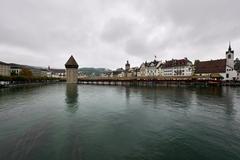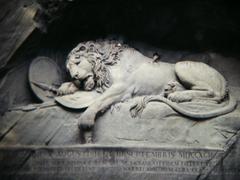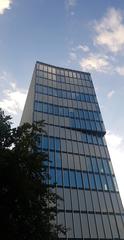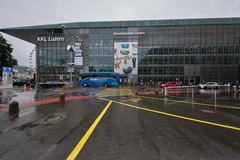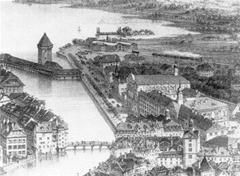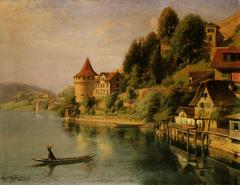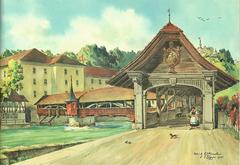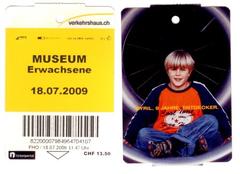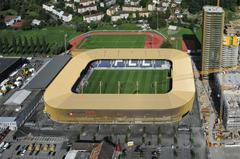
Jesuit Church Lucerne: Visiting Hours, Tickets, and Historical Significance
Date: 04/07/2025
Introduction
Nestled along the picturesque Reuss River in the heart of Lucerne, Switzerland, the Jesuit Church (Jesuitenkirche) stands as a crowning achievement of Baroque architecture and a powerful symbol of the city’s religious and cultural history. Built in the 17th century as the first major Baroque church north of the Alps, the Jesuit Church emerged during the Counter-Reformation, reflecting Lucerne’s enduring commitment to Catholicism amidst a region marked by religious transformation. This guide offers a detailed overview of the church’s origins, architectural wonders, and practical visitor information—including opening hours, ticketing, accessibility, and tips for an enriching visit.
Table of Contents
- Introduction
- Historical Background
- Architectural and Artistic Highlights
- Religious and Cultural Significance
- Visitor Information
- Tips for Visitors
- Frequently Asked Questions (FAQ)
- Conclusion
- Sources
Historical Background
Counter-Reformation Context
The Jesuit Church’s origins are deeply rooted in the religious upheavals of the 16th and 17th centuries. As the Protestant Reformation spread across Switzerland, Lucerne firmly aligned with the Catholic cause. The arrival of the Jesuit order in 1573, invited by Lucerne’s leadership, marked the city as a bastion of Catholic resistance and renewal (lucerne.all-about-switzerland.info; spottinghistory.com).
Establishment of the Jesuit College
With strong backing from Mayor Ludwig Pfyffer von Altishofen, the Jesuits founded a college in 1577, transforming Lucerne into a center of Catholic education and theology. The college, housed in the Renaissance Ritter Palace, quickly became a prominent institution, attracting hundreds of students and positioning the city at the forefront of the Counter-Reformation in Switzerland (lucerne.all-about-switzerland.info).
Construction and Legacy
Construction of the Jesuit Church began in 1666, with its shell completed in 1673 and consecration in 1677. The church’s iconic onion-domed towers, which now define Lucerne’s skyline, were completed in 1893. The building set a precedent for Baroque ecclesiastical architecture north of the Alps and became a template for subsequent Swiss churches (myswitzerland.com; WanderInEurope).
Architectural and Artistic Highlights
Exterior Features
The church’s riverside façade, adorned with harmonious Baroque proportions, pilasters, arched windows, and twin onion-domed towers painted soft green, is instantly recognizable from many vantage points across Lucerne (Luzern.com). The reflection of its graceful silhouette in the Reuss River creates a quintessential Lucerne scene.
Interior Design
Stepping inside, visitors are greeted by an airy, light-filled nave with white stucco walls, gilded altars, and elaborate ceiling frescoes. Inspired by the Church of the Gesù in Rome, the layout features a broad nave flanked by eight side chapels, each richly decorated with altars, paintings, and sculptures dedicated to various saints (Switzerlanding; WanderInEurope).
Intricate stucco work—crafted by Jesuit brother Heinrich Meyer—swirls across the ceilings and arches, complemented by restrained yet evocative frescoes by Giovanni Antonio Viscardi. The main altar, a masterpiece of Baroque art, gleams with gilded details and marble columns, while the life-sized statue of Brother Klaus in the side chapel invites contemplation (myswitzerland.com).
Acoustics and Organ
The church’s exceptional acoustics make it a favored venue for sacred music concerts and organ recitals. The grand pipe organ, installed in the 1980s, and the historic tradition of church music continue to draw international performers and audiences (Luzern.com).
Religious and Cultural Significance
Originally the spiritual home of Lucerne’s Catholic community and a beacon of the Counter-Reformation, the Jesuit Church has evolved into a vibrant cultural venue. It hosts regular services, sacred music concerts, academic ceremonies, and community events. A formal agreement since 1989 ensures its continued use for both worship and cultural programming (jesuitenkirche-luzern.ch).
Its open approach extends beyond faith, as the church frequently welcomes interfaith gatherings, lectures, and public concerts, reinforcing its role as a bridge for cultural dialogue in Lucerne.
Visitor Information
Opening Hours and Tickets
- Opening Hours: Generally open daily from 9:00 AM to 6:00 PM, with slight variations during religious services, holidays, or special events. Always check the official website for current hours.
- Admission: Entry is free for worship and general visits. Donations are welcome. Tickets may be required for guided tours or concerts.
- Location: Jesuitenplatz, Lucerne—about a 5–7 minute walk (500 meters) from the main train station and easily visible from the Chapel Bridge and Seebrücke (WanderInEurope).
Accessibility
- The church is wheelchair accessible via ramps at the main entrance. Assistance is available upon request.
Guided Tours
- Guided tours are available in multiple languages and can be booked via the official church website or the Lucerne tourist office.
- Many city walking tours include the church as a highlight.
Nearby Attractions
The Jesuit Church’s central location makes it an ideal starting point for exploring Lucerne’s treasures:
- Chapel Bridge (Kapellbrücke)
- Old Town (Altstadt)
- Swiss Museum of Transport
- Spreuer Bridge
- Lake Lucerne cruise embarkation points
Tips for Visitors
- Best Times to Visit: Early mornings or late evenings on weekdays are quieter.
- Dress Code: Modest attire is expected; cover shoulders and knees, remove hats.
- Photography: Permitted (no flash or tripods). Be respectful of worshippers.
- Facilities: Restrooms and dining options are available nearby in the Old Town. The church does not have a café or gift shop.
- Language: Information panels are in German and English; staff often speak English.
Frequently Asked Questions (FAQ)
What are the Jesuit Church Lucerne visiting hours?
Generally 9:00 AM–6:00 PM daily; check the official site for updates.
Is there an entry fee?
Entry is free. Donations are appreciated. Certain concerts or events may require tickets.
Are guided tours available?
Yes, through the official church website and local tourism offices.
Is the church wheelchair accessible?
Yes, with ramps and assistance available.
Where is the Jesuit Church located?
Jesuitenplatz, Lucerne, on the southern bank of the Reuss River, near the main train station.
Are concerts and events held at the church?
Yes, the church hosts regular sacred music concerts and special cultural events.
Conclusion
The Jesuit Church Lucerne embodies centuries of faith, artistry, and community spirit. From its Baroque splendor—marked by ornate façades and luminous interiors—to its vital role in Lucerne’s cultural and religious life, the church offers an experience that resonates with history and inspiration. With free daily access, guided tours, and a vibrant calendar of services and concerts, it is an essential stop for any visitor to Lucerne. Plan your visit with this guide and immerse yourself in one of Switzerland’s most remarkable landmarks.
For the latest information on hours, events, and tours, consult the official Jesuit Church Lucerne website. Explore more with the Audiala app for guided tours and insider tips.
Sources and Further Information
- Jesuit Church Lucerne: Visiting Hours, Tickets, and Historical Significance (lucerne.all-about-switzerland.info)
- Jesuit Church Lucerne Historical Overview (spottinghistory.com)
- Jesuit Church Lucerne Visitor Information (jesuitenkirche-luzern.ch)
- Jesuitenkirche Lucerne Experience (myswitzerland.com)
- Jesuit Church Lucerne Architecture and Visitor Guide (WanderInEurope)
- Jesuit Church Lucerne Details (Switzerlanding)

